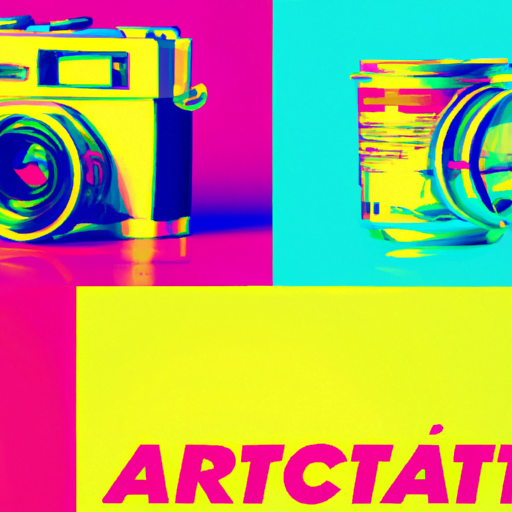
-
Table of Contents
Retro Futurism in Graphic Design

Retro futurism is a design style that combines elements of the past with futuristic concepts. It is a visual representation of how people in the past imagined the future. In graphic design, retro futurism has gained popularity in recent years, with designers incorporating nostalgic elements into their work to create a sense of nostalgia and anticipation for the future. This article explores the history of retro futurism in graphic design, its key characteristics, and its impact on contemporary design.
The Origins of Retro Futurism
Retro futurism emerged in the early 20th century, during a time when technological advancements were rapidly changing society. It was influenced by the Art Deco movement, which celebrated modernity and progress. The 1939 New York World’s Fair is often considered a pivotal moment in the development of retro futurism. The fair showcased futuristic designs and technologies, such as streamlined cars, robots, and futuristic architecture.
During the 1950s and 1960s, retro futurism became more prominent in popular culture. Science fiction movies and books depicted futuristic worlds with flying cars, space travel, and advanced technology. This era is often referred to as the “Golden Age” of retro futurism. The designs of this period were characterized by sleek lines, geometric shapes, and vibrant colors.
Key Characteristics of Retro Futurism
Retro futurism in graphic design is characterized by a combination of futuristic and nostalgic elements. It often incorporates vintage typography, retro color palettes, and imagery from the past. Some key characteristics of retro futurism in graphic design include:
- Sleek and streamlined designs
- Geometric shapes and patterns
- Bold and vibrant colors
- Use of vintage typography
- Depiction of futuristic technology
- References to popular culture of the past
Examples of Retro Futurism in Graphic Design
Many contemporary designers have embraced retro futurism in their work, creating visually striking designs that evoke a sense of nostalgia and anticipation for the future. Here are some examples of retro futurism in graphic design:
1. Nike Air Max 2090
The Nike Air Max 2090 is a modern sneaker design that pays homage to the iconic Air Max 90 from the 1990s. It features a sleek and streamlined silhouette, futuristic materials, and vibrant color combinations. The design combines elements of the past with futuristic concepts, creating a sense of nostalgia for sneaker enthusiasts.
2. Stranger Things Poster
The poster for the popular Netflix series “Stranger Things” is a great example of retro futurism in graphic design. It incorporates vintage typography, a retro color palette, and imagery inspired by 1980s pop culture. The design captures the essence of the show’s nostalgic and futuristic themes.
3. SpaceX Logo
The logo of SpaceX, the aerospace manufacturer and space transportation company founded by Elon Musk, is another example of retro futurism in graphic design. The logo features a sleek and streamlined design, reminiscent of space exploration in the mid-20th century. It combines futuristic elements with a nod to the past, symbolizing the company’s mission to revolutionize space technology.
The Impact of Retro Futurism in Graphic Design
Retro futurism has had a significant impact on contemporary graphic design. It has become a popular design trend, with many brands and designers incorporating retro futurist elements into their work. Here are some ways in which retro futurism has influenced graphic design:
- Creating a sense of nostalgia: Retro futurism evokes a sense of nostalgia for the past, appealing to people’s desire for simpler times. It taps into the collective memory and creates a connection between the past and the future.
- Standing out from the crowd: In a world saturated with modern and minimalist designs, retro futurism offers a unique and eye-catching aesthetic. It allows brands to differentiate themselves and capture the attention of their target audience.
- Reimagining the future: Retro futurism encourages designers to think outside the box and imagine alternative futures. By combining elements of the past with futuristic concepts, designers can create visually compelling and thought-provoking designs.
- Appealing to multiple generations: Retro futurism appeals to both older generations who experienced the past and younger generations who are fascinated by the aesthetics of the past. It bridges the generation gap and creates a sense of universality.
Summary
Retro futurism in graphic design is a design style that combines elements of the past with futuristic concepts. It emerged in the early 20th century and gained popularity during the 1950s and 1960s. Retro futurism is characterized by sleek and streamlined designs, geometric shapes, bold colors, vintage typography, and references to popular culture of the past. It has had a significant impact on contemporary graphic design, creating a sense of nostalgia, helping brands stand out, encouraging alternative thinking, and appealing to multiple generations. Retro futurism continues to inspire designers and captivate audiences with its unique blend of the past and the future.
